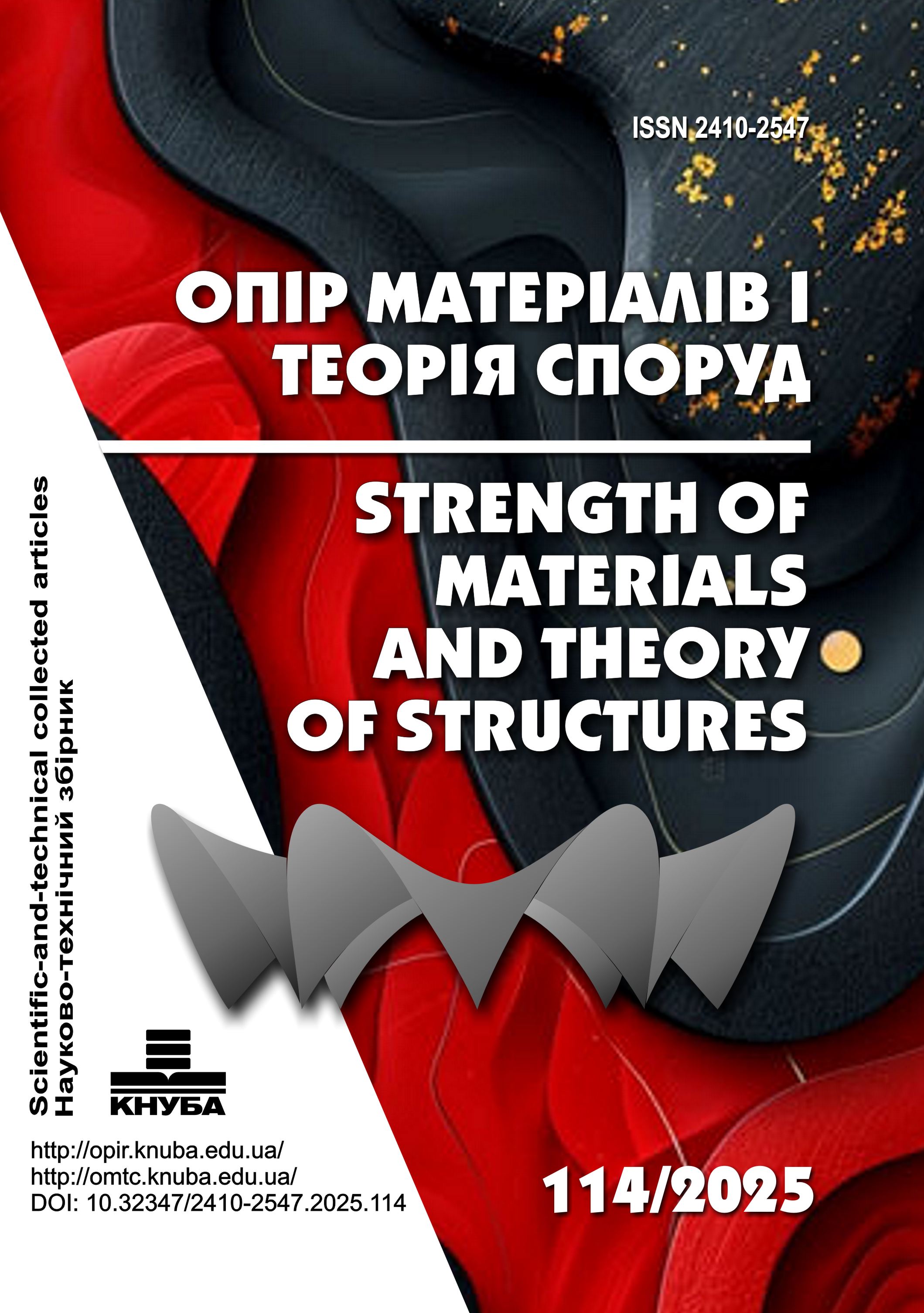Research on the influence of the simulation method of the soil base of a slab foundation on the stress-strain state of building structures
DOI:
https://doi.org/10.32347/2410-2547.2025.114.217-230Keywords:
numerical simulation, stress-strain state, soil base stiffness coefficients, volumetric finite elements for soil base simulating, slab foundation, bending moments, stress, displacementAbstract
The paper is devoted to the study of the influence of the simulation method of the soil base of a monolithic reinforced concrete slab foundation on the stress-strain state of underground and above-ground structures. A comparison is made of: 1) bending moments in the foundation slab; 2) foundation subsidence; 3) stress in monolithic reinforced concrete basement walls; 4) bending moments in the floor slab above the basement; 5) stress in wall panels of a typical (4th) floor; 6) horizontal displacements of parapet wall panels; 7) time spent on calculating the model. It has been established that the use of a simplified approach to numerical simulation, namely the use of a model with soil base rigidity coefficients makes it possible to obtain information on the stress-strain state of foundations and above-ground structures several times faster (approximately three times) than when using volumetric finite elements for the soil simulation. It has been studied that the use of a model with stiffness coefficients leads to overestimated displacement values, namely: foundation subsidence by 3.4 times, and horizontal displacements of above-ground structures by 2 times compared to the use of models with a volumetric soil massif.
It has been revealed that the bending moments in the foundation slab when using a simplified approach to numerical modeling will differ within 10% from the approach using volumetric FE as a basis.
It has been studied that horizontal stresses in monolithic reinforced concrete basement walls differ both quantitatively and significantly depending on the base modeling method. Vertical stresses in the basement walls when using foundation stiffness coefficients will be 10% greater than in models using the imperial approach.
It has been found that the bending moments in the floor slab above the basement are almost independent of the base modeling method. It was found that horizontal stresses in wall panels of a typical (fourth) floor will be 25% lower when using a model with foundation stiffness coefficients. Vertical stresses correlate well with each other, regardless of the soil basesimulating method, the difference is about 2%.
References
Nosenko V.S., Krivenko O.A. Vpliv zhorstkostі nesuchih konstrukcіj budinku zі zbіrnogo zalіzobetonu na napruzheno-deformovanij stan fundamentіv іz buroіn’єkcіjnih pal' (The influence of the stiffness of the load-bearing structures of a precast reinforced concrete house on the stress-strain state of foundations made of bored piles)/ V.S. Nosenko, O.A. Krivenko // Bases and Foundation. – 2020. – Issue 40. – p. 48 – 57. (in Ukrainian)
Zhupanenko I.V.Chisel'nijanalіzmetodіvrozrahunkuґruntovoїosnovitametodіvviznachennyakoefіcієntіvpostelі (Numerical analysis of methods for calculating the soil base and methods for determining thesoil base stiffness coefficients) / I.V. Zhupanenko // Bases and Foundation. – 2020. – Issue 41. – p. 64 – 71.(in Ukrainian)
Gorbunov-Posadov M.I., Malikova T.A., Solomin V.I (1984) Raschet konstrukcij na uprugom osnovanii (Calculation of structures on an elastic base), 679 p.
Pasternak P.L. (1954) Osnovy novogo metoda rascheta fundamentov na uprugom osnovanii pri pomoshchi dvukh koehfficientov posteli (Fundamentals of a new method of foundations calculating on an elastic base using two soil base stiffness coefficients), 56 p.
Downloads
Published
Issue
Section
License

This work is licensed under a Creative Commons Attribution 4.0 International License.
Authors retain copyright and grant the journal right of first publication with the work simultaneously licensed under a Creative Commons Attribution License that allows others to share the work with an acknowledgement of the work's authorship and initial publication in this journal.

